Healing the Communities and Land of the Standing Rock Nation in Ocethi Sakowin Territory
- Regenerative Agriculture
- Food Waste Reduction
- Indigenous Tenure
- Women
- Great Plains
- Northern America Realm
| Bioregion | Northern Prairie & Aspen Forests (NA12) |
| Category | Regenerative Agriculture Our project categories represent one of three core solutions pathways to solving climate change. Energy Transition focuses on renewable energy access and energy efficiency. Nature Conservation includes wildlife habitat protection and ecosystem restoration, as well as Indigenous land rights. Regenerative Agriculture supports farmers, ranchers, and community agriculture. |
| Realm | Northern America The Project Marketplace is organized by the major terrestrial realms divided into 14 biogeographical regions – N. America, Subarctic America, C. America, S. America, Afrotropics, Indomalaya, Australasia, Oceania, Antarctica, and the Palearctic realm, which coincides with Eurasia and is divided into Subarctic, Western, Central, Eastern, and Southern regions. |
| Partner | Mní Wičóni Health Circle |
One Earth’s Project Marketplace funds on-the-ground climate solutions that are key to solving the climate crisis through three pillars of collective action — renewable energy, nature conservation, and regenerative agriculture.
The Mni Wichoni Health Circle was conceived by Indigenous medics and healers who were serving in the Water Protector camps on Standing Rock Nation during actions to prevent the Dakota Access Pipeline from crossing their lands and waters. Located in Ocheti Sakowin (Seven Sacred Council Fires) territory in what is now known as North and South Dakota, this area has been the home of Indigenous people since time immemorial. The Standing Rock Sioux Reservation was originally established as part of the Great Sioux Reservation, which includes the sacred Black Hills and the life-giving Mnisose (Missouri River). Today, much of the land is utilized for farming, ranching, and other activities that are not directly benefiting the Indigenous communities or contributing to their food system, and are often harmful to the land and its biodiversity.
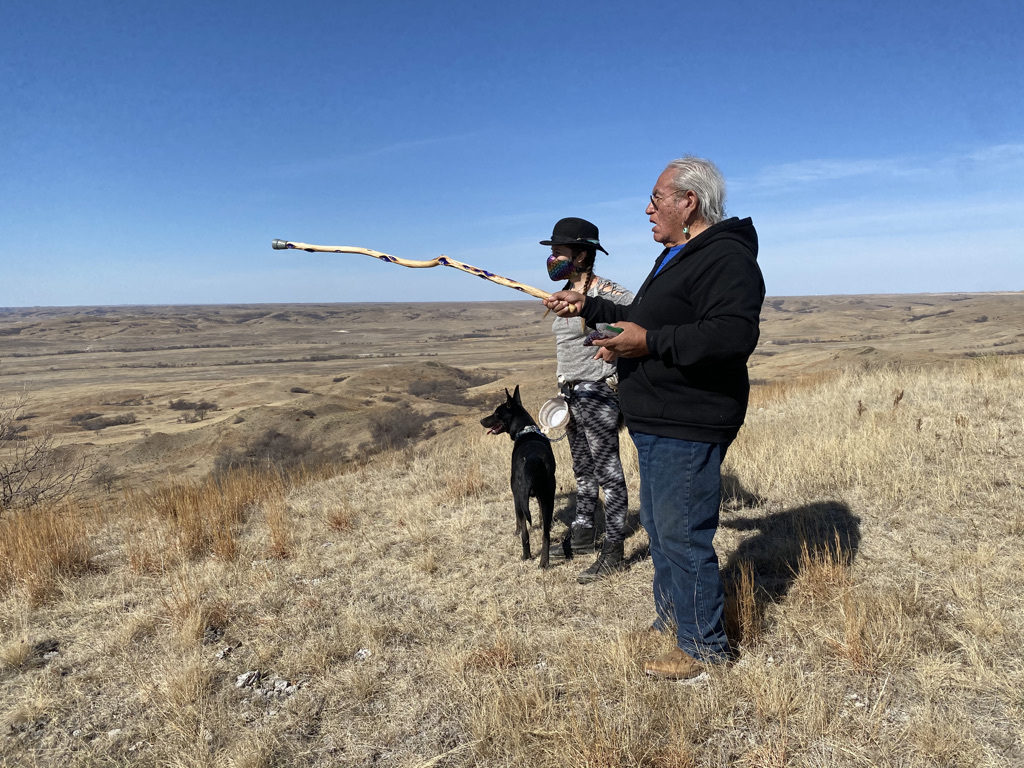
Image credit: Courtesy of the Mni Wichoni Health Circle
Indigenous peoples have historically been at the mercy of federal policy, and this remains true today. Many of the health challenges they now face are a direct result of the federal government targeting land, language, and lifeways in an effort to eliminate the important ties to Indigenous peoples’ identities. Essentially, this policy was intended to keep alive General Pratt’s motto: “Kill the Indian, save the man.” With forced assimilation and federal laws targeting Indigenous communities, serious health issues and environmental problems ensued. Treaties meant to protect Indigenous peoples and their lands have continuously been riddled with broken promises and broken treaties.
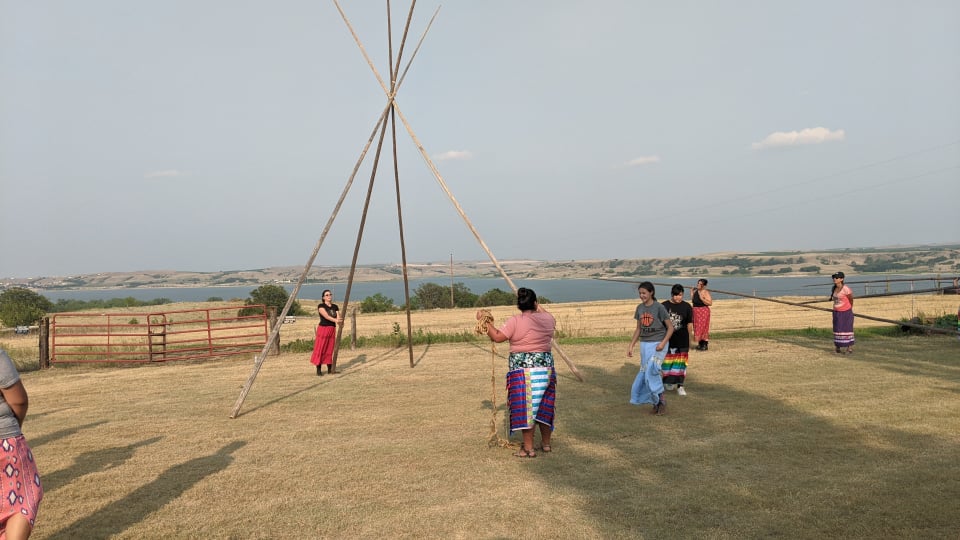
Isnathi Awichalowanpi. Image credit: Courtesy of the Mni Wichoni Health Circle
%20(July%202021).webp)
Isnathi Awichalowanpi. Image credit: Courtesy of the Mni Wichoni Health Circle
With a vision to decolonize food and medicine, one of the main goals of the women-led Mni Wiconi Health Circle is to create opportunities for community members to reconnect to nature through land-based learning and healing. The current land base of the reservation is 2.3 million acres. The MWHC’s vision is to create physical spaces in each of the eight districts throughout the Standing Rock Tribal homelands where community members can gather, learn about their history through educational activities and signage, take part in ceremonial practices, and have a source of pride in their communities. Through training, they are already receiving hands-on experience in traditional foraging, planting and food processing and preparation. They are also learning about Indigenous land regenerative practices that include restoration of the prairie ecosystem through native seeds, plants, and grazing animals such as the buffalo.
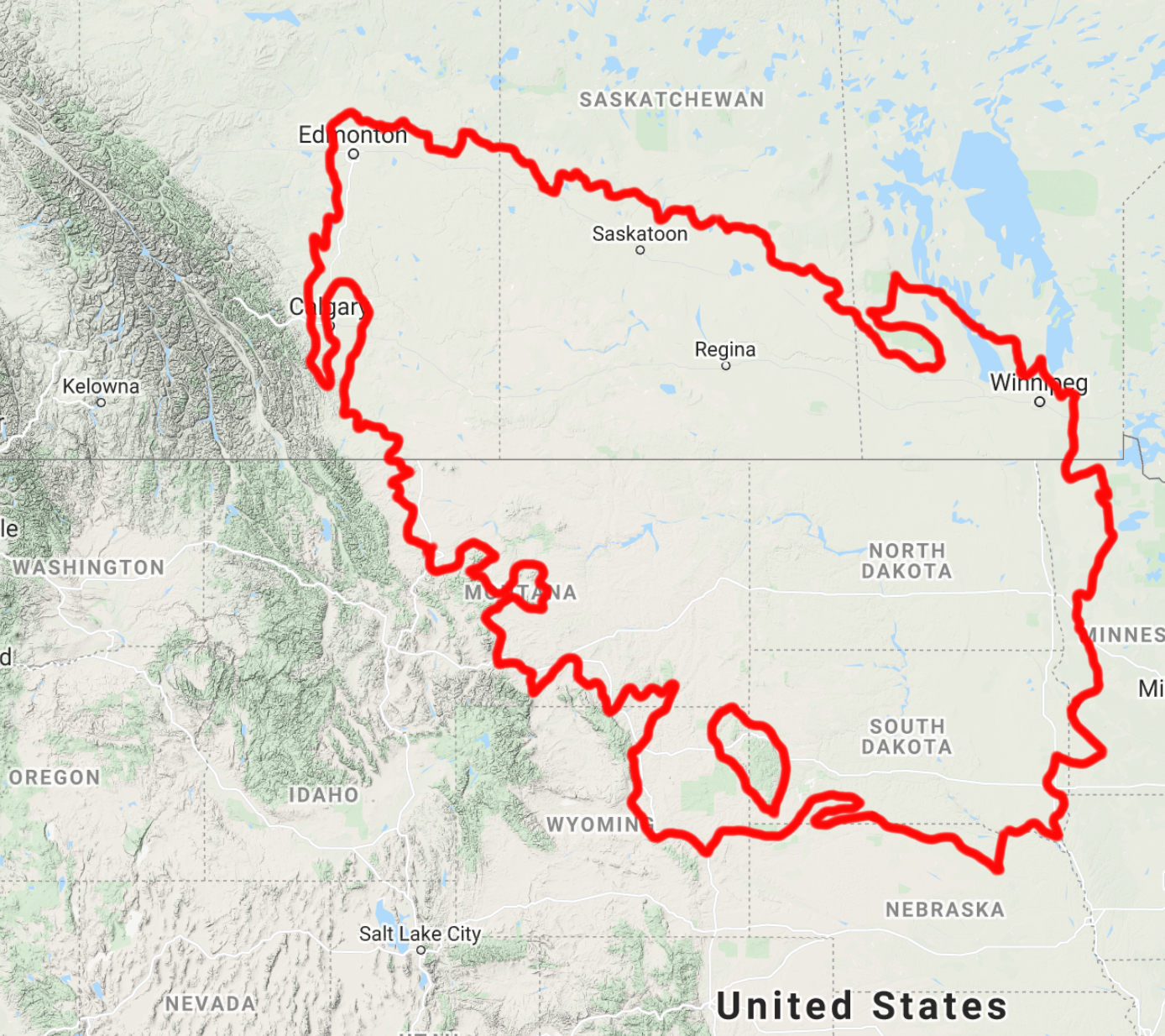
Located in the Northern Prairie & Aspen Forests (NA12) bioregion
Additional efforts, many of which are already taking place, will include: hosting land and community healing projects; developing permanent and mobile educational spaces; establishing a curriculum to share with schools; building clinics and mobile units that focus on decolonizing health care, and incorporating Indigenous healing modalities; creating farms using regenerative practices and featuring a traditional diet; and creating an alliance with other food, nutrition and medicine sovereignty programs on Standing Rock and within the broader Ochethi Sakowin region. Sharing knowledge and resources with other nations who were also forced to forget many ceremonies and Indigenous practices of their people will continue to strengthen and benefit the entire wider community.

Image credit: Courtesy of the Mni Wichoni Health Circle
What is created in the seed project envisioned here will be shared with future generations, for it is part of the Ocheti Sakowin culture to consider that what is done today must keep in mind the well-being of the next seven generations. The work being done to heal these lands and communities is so their descendants will have healthy, livable, workable land that can sustain and nourish them and be a place of continued healing.

Image credit: Courtesy of the Mni Wichoni Health Circle
Currently, the Mni Wiconi Health Circle is revitalizing many ceremonial practices with the elders and community members. They are in the process of building alliances with other organizations working on land restoration efforts to undo the harm of Settler Colonialism and the impacts of farming on tribal lands. By reintroducing Indigenous ceremonies on these lands, they’re restoring connections to nature, reintroducing important protocols such as respectful harvesting, propagation, and planting, as well as making diligent efforts to restore the environment. Various methods of knowledge sharing are also implemented. One of the most influential is the master-apprentice model, widely used in language revitalization efforts, as a way for elders to pass down knowledge and teachings to community members in a safe, nurturing, and sustainable way.
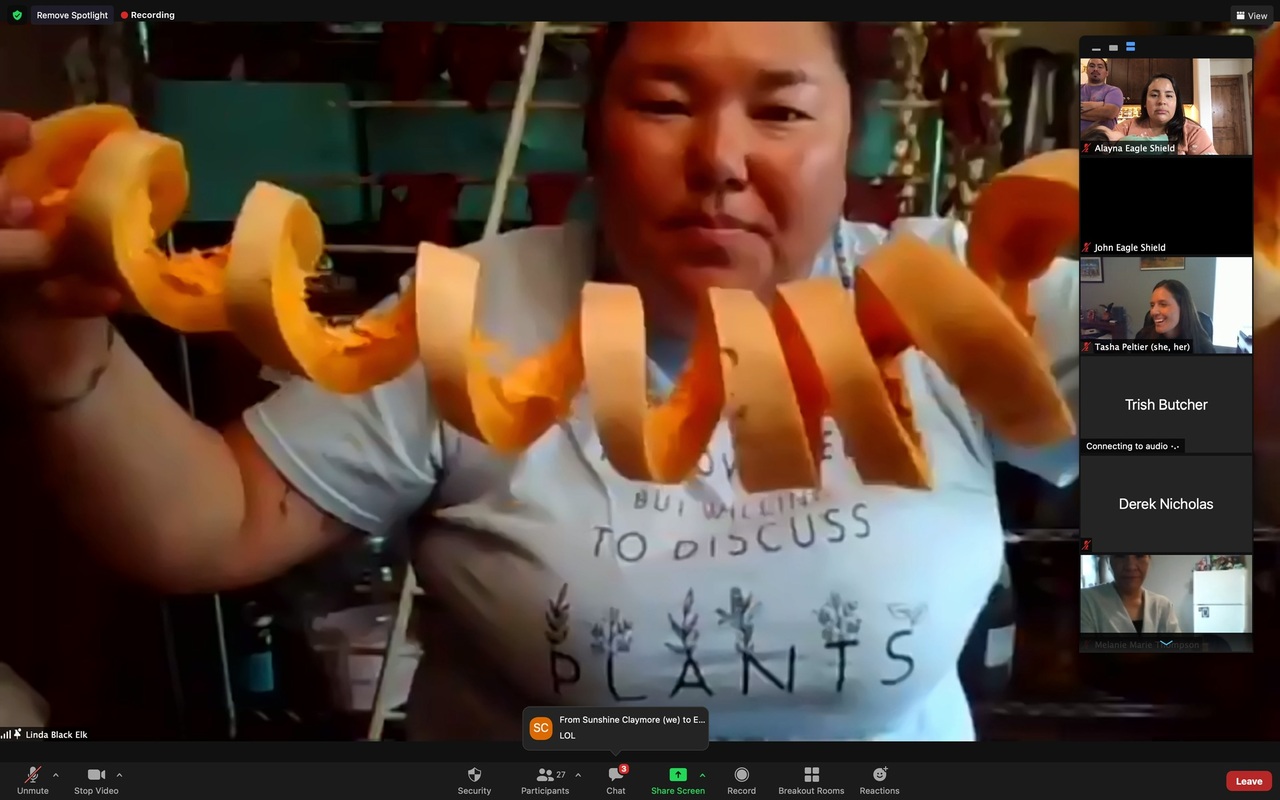
Image credit: Courtesy of the Mni Wichoni Health Circle
Examples of this work include the Chansasa (Red Willow) Revitalization Project in which the master-apprentice model is used to pair elders and community members together to learn and share information on the sacred plant chansasa (red willow). Chansasa is the plant the Lakota/Dakota people use for tobacco. The middle layer is dried and smoked in chanupa (sacred pipes) and the outer layer is used for prayer ties or for teas. During the project, resource guides were created for community members, and natural walking trails were developed in two locations on the Standing Rock Sioux Tribe. Replanting of chansasa is also occurring over harvested areas.
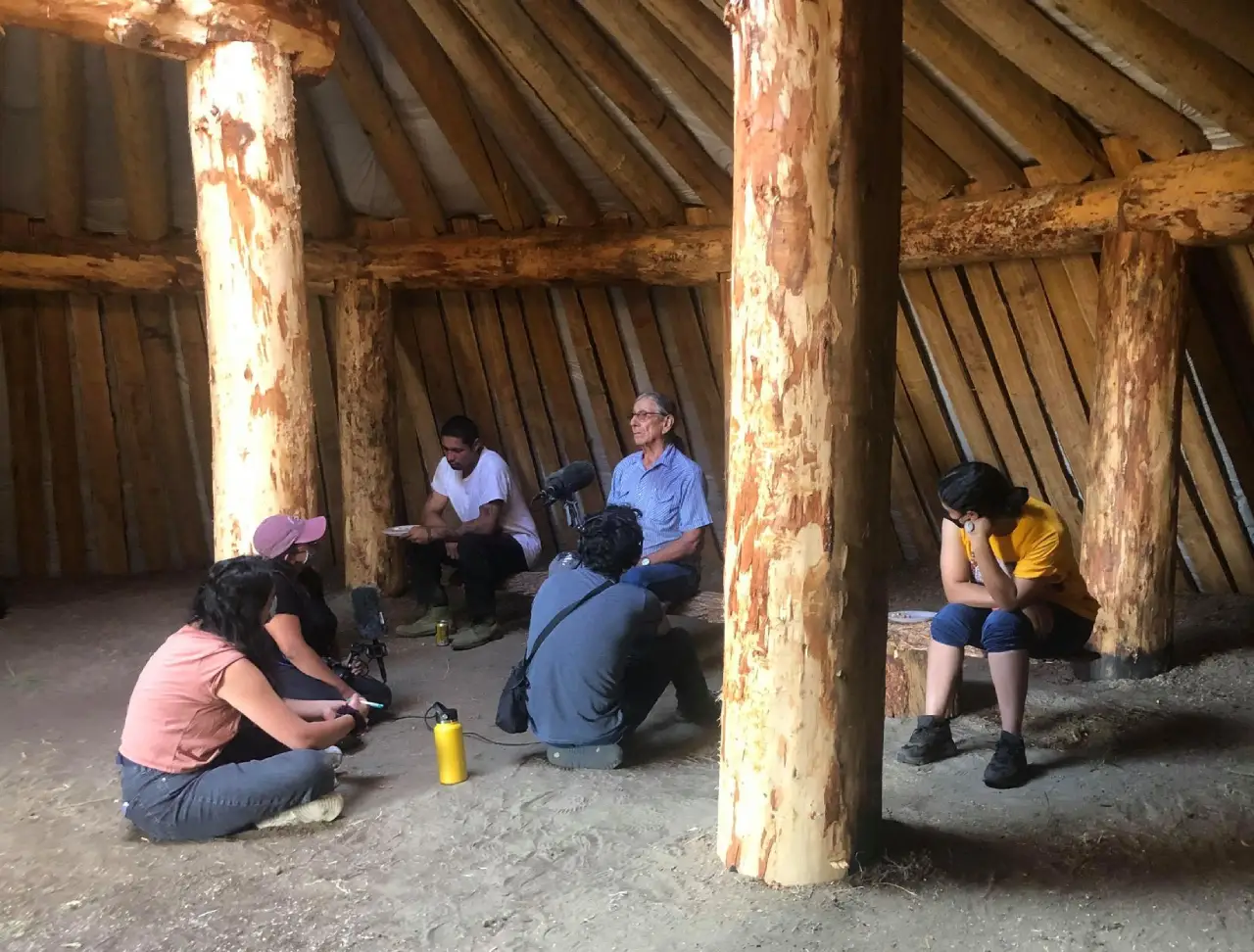
Earth lodge collaboration. Image credit: Courtesy of the Mni Wichoni Health Circle
The Isnathi Awichalowanpi ceremony is another example of several ceremonies that have been reintroduced to honor important life passages, beginning with welcoming newborns into the community. This ceremony is a four-day event that consists of young girls or those who identify with female energy, transgender youth, those who would like to gain the teachings of a coming-of-age ceremony, and sometimes older persons who have never gone through the ceremony, who are at the beginning stages of menstruation or womanhood. During this ceremony, life skills are taught by the elders, such as how to identify and use plant medicines found on the prairie and how to set up sacred altars. Although this ceremony hasn’t been practiced in this manner for many generations, it is being brought back to the Standing Rock Sioux Tribe in a beautiful way through the help of reservation elders.
f.webp)
Image credit: Courtesy of the Mni Wichoni Health Circle
The MWHC also participated in building the first community Earth Lodge, a large dome-shaped structure built slightly into the earth using massive beams and strategic measurements that represent the universe, with the door facing East. Also used by relatives that include the Mandan, Hidatsa, and Arikara (MHA), these structures once covered Standing Rock’s land base prior to colonization. Through this project, the people have been able to join with their MHA relatives and learn about the history and beautiful teachings of the earth lodges. This is one example of how healing can happen and relatives can be reconnected with each other when communities are given an opportunity to engage with the land in meaningful ways. These structures will be used as bases for teachings and ceremonies as the people work to restore their relationship with the earth.
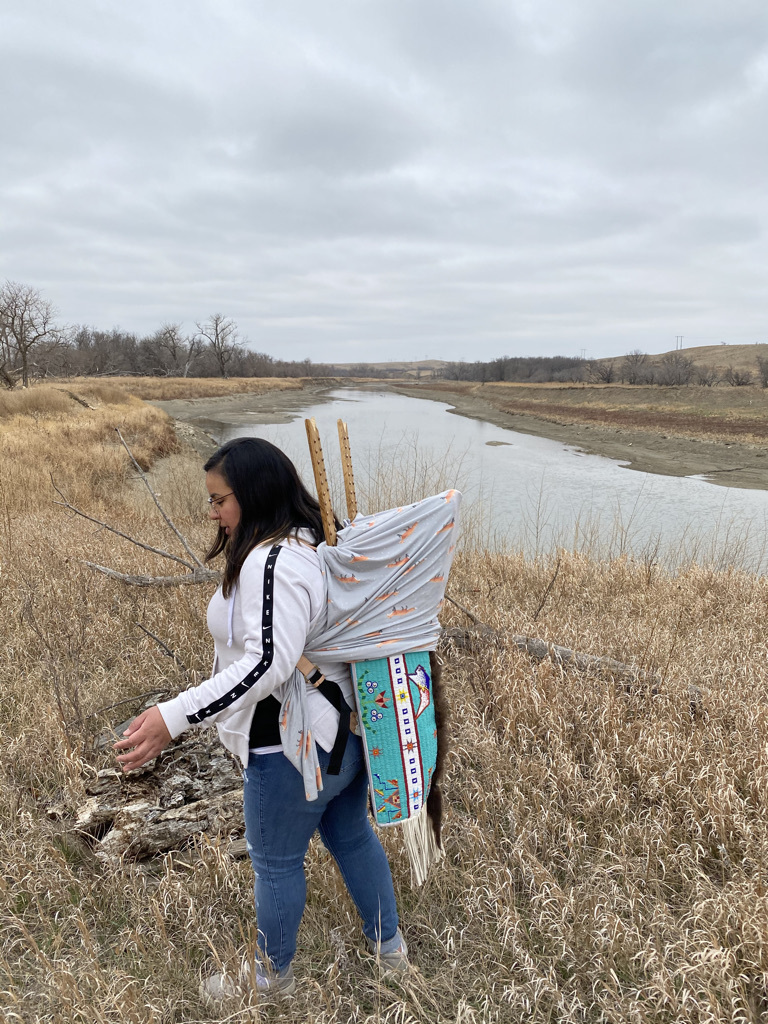
Image credit: Courtesy of the Mni Wichoni Health Circle
The pandemic has taken a serious toll on Indigenous peoples who already experience some of the worst health outcomes in the nation The women of the Mni Wiconi Health Circle have taken a leadership role in caring for and advising the Standing Rock community on COVID-19, and have used this time to build relationships by consulting and working closely with the youth, elders, and other tribes, seeking their guidance and wisdom in creating an effective strategy to reclaim, revitalize and restore the people’s traditional lifeways, food sovereignty and the health of their lands.
